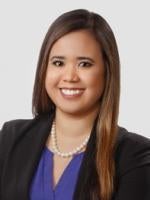Two California cities, San Francisco and San Jose adopted emergency ordinances to expand paid sick leave and emergency Family Medical Leave Act (FMLA) leave benefits. The ordinances cover gaps under federal law by expanding leave benefits under the Families First Coronavirus Response Act (FFCRA) to employers with more than 500 employees.
The ordinances cover most gig workers and independent contractors. Under the ordinances, all workers are presumed to be employees unless their employer can affirmatively demonstrate otherwise in accordance with Labor Code section 2750.3 also known as AB-5.
Both ordinances grant up to 80 hours (two-weeks) of emergency paid sick leave to workers not yet covered by federal law. The ordinances cover large private companies as well as nonprofits employing more than 500 employees.
San Jose’s ordinance specifically applies to employees who are employed by an employer and have worked at least two (2) hours or more within the city, though it does not specify over what period of time. The San Jose ordinance defines an “employer” as someone subject to the Business License Tax Chapter 4.76 of the Municipal Code or maintains a facility within the city. Whereas under the San Francisco ordinance, eligible employees must have worked fifty-six (56) or more hours of work within the geographic boundaries of the city during the 365 days immediately preceding the effective date of the ordinance.
To qualify for these emergency sick leave protections, an employee must be under a quarantine or isolation order, experiencing symptoms related to COVID-19, caring for an individual with a suspected or confirmed case of COVID-19, or watching a child whose school or daycare has been closed due to COVID-19.
The ordinances apply to essential businesses and businesses that are still operating remotely but do not apply to businesses that have already closed. Furthermore, in the San Francisco ordinance, employees who are defined as “healthcare providers” under federal law, including medical doctors and nurse practitioners, are generally exempt from these paid sick leave entitlements.
Like the federal law, the San Jose ordinance sets a cap on amounts paid in supplemental sick leave. Under the San Jose ordinance, an employer will pay an employee for properly used sick leave at the employee’s regular rate of pay up to $511 a day not to exceed an aggregate of $5,110. Notwithstanding the foregoing, the employer may pay an employee using sick time to care for another person at two-thirds of the employee’s regular rate of pay up to $200 a day not to exceed an aggregate of $2,000. The San Francisco ordinance does not currently contain a cap though that may change in the final approved version of the ordinance.
The City of Los Angeles City Council recently passed a similar ordinance. However, immediately following the Los Angeles mayor’s approval of the ordinance, he issued an order that superseded the ordinance and added several exemptions. The mayors of both San Francisco and San Jose have expressed support for the ordinances but there is still potential for changes to be made. During a recent City Council meeting, San Jose’s mayor articulated that he and the other councilmembers will be engaging in ongoing discussions with the business community given that this emergency ordinance was quickly drafted without much time to fully understand its impact on the business community. San Francisco Mayor London Breed has expressed general support for the ordinance.
Both ordinances have urgency clauses and therefore will go into effect shortly after they are approved.





 />i
/>i

